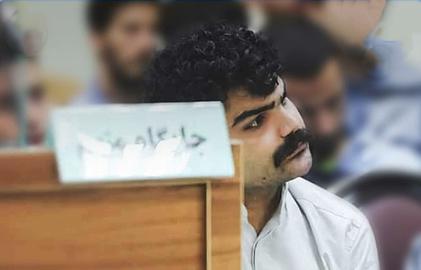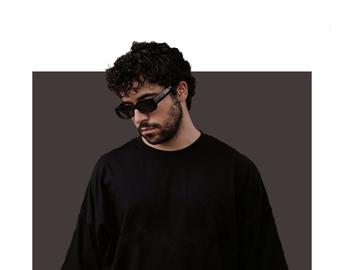Religious edicts and decrees have banned it: qamezani, a ritual self-mutilation with cutlass strikes to the head or back, performed during Ashoura, one of the holiest mourning days in Shia Islam. Each year before the start of Muharram, the lunar month during which Ashoura falls, Iranian police warn forcefully against the practice. Yet in some cities across Iran mourners perform the ritual in secrecy and in prearranged locations.
Iranian justice officials have decreed public qamezani a felony, punishable by prison terms from one to three years. In practice, as a result of prohibitions and clashes between the police and mourners who persist in engaging in the ritual, qamezani has been transformed into an underground practice: until the eve of Ashoura’, (which this year falls on November 14th) the locations for the ritual are kept in strict secrecy. Only a few hours before the rituals are to take place, organizes inform prospective participants where and when to go.
In the past the ritual was not forbidden. Those who chose this way to mourn the anniversary of the martyrdom of Imam Hossein, the grandson of the Prophet, were permitted to do so by the Islamic Republic's authorities. In 1994 Ayatollah Khamenei, Iran's Supreme Leader, came out against this manner of mourning and declared it forbidden in a public speech.
“I thought a lot,” said Ayatollah Khamenei, “and concluded that I cannot keep our dear people ignorant of the fact that this [qamezani] is a fallacy and a transgression. I cannot approve of it. If somebody publicly sets out to commit qamezani, I would disapprove of him in my heart. I am saying this seriously. There was a time when, far from the public eye, a few people gathered and exercised qamezani, but they were not doing it publicly in today’s sense of the word. And nobody was concerned whether what they did was good or bad because it was done in a limited circle. However, if suddenly a few thousand people appear in a street of Tehran, or Qom or the cities of Azerbaijan or Khorasan, and begin striking their heads with cutlasses or sabers—this is really a transgression. Imam Hossein would not approve of such an idea. I don’t know what manner of mind would bring such strange and incorrect fallacies into Islamic society and into our revolutionary society.”
After this speech police began taking strict measures to prevent qamezani, and authorities launched programs to educate people and persuade them against carrying out the ritual.
To convince qamezani's hardline devotees, authorities invoked a number of arguments: that enemies of the Shia use qamezani as a pretext for sectarian discrimination, that those mourning Imam Hossein are presented as violent people, that the practice in effect weaks Islam and Shiism, and that a number of religious edicts have in fact determined that the practice is religious illegal and illegitimate.
These actions, along with the strict treatment of the issue by the police, noticeably reduced such violent moruning in Iran during Ashoura—so much so that in the past few years the media have published little news of qamezani at all, except on rare occasions.
Away From The Public Eye
While qamezani is no longer an openly part of traditional street mourning it is still practiced in many cities in Iran, the difference is that today it is done in secret. While in previous years those who wanted to engage in qamezani came to the main streets and public squares of the cities among the mourning crowds, now they go to silos, parking lots, private yards, basements and gardens to strike their heads with a cutlass to mourn for their favorite imam.
Before the ban, qamezani was popular in many Iranian provinces and a distinct group of mourners engaged in it at Ashoura’s noon. After the banqamezani disappeared from some provinces while in others it continued diligently but secretly, among them West and East Azerbaijan, Gilan, Mazandaran, Tehran, Qom and Isfahan.
The practice is more prevalent in Turkish-speaking towns and villages such as Ardebil, Zanjan, and West and East Azerbaijan. To these one must add the cities of Lahijan and Langarood, the village of Rood-Boneh of Lahijan in Gilan, Khomeini Shahr, Qahdrijan in the province of Isfahan, Surak in Mazandaran, Zarach in the province of Yazd and Varamin in the province of Tehran. “Families that have made religious vows for Ashoura prepare their yards, parking spaces or basements for qamezani at noon of that day and invite trusted people to participate,” described Ruhollah, who lives in Tabriz, a large city in northwestern Iran “Based on this arrangement, on the morning of Ashoura, they go to the house of the people who have made the vow, dressed in white shrouds and gather in a circle. Before starting qamezani they begin chanting an elegy, traditional in Turkish-speaking towns, called “shakhesi wakhesi” and then qamezani starts. Each one takes a turn in striking his head with the cutlass or knife in his hand until blood flows.” The media has reported clashes in the past few years between those engaged in qamezani and police in the cities of Lahijan and Khomeini Shahr. Five kilometers from Lahijan, the village of Rood-Boneh is one of main areas where qamezani takes place every year. In the province of Gilan, covered with forests, qamezani takes place in private gardens or deep inside forests surrounding towns and villages. Only people who want to participate are informed where the ritual is going to happen. Saeed who lives in Lahijannd said that in his hometown the practice has gone underground. “ About four years ago, during the ceremonies of Ashoura in the center of the town, a group of people who in previous years had engaged in qamezani suddenly brought out cutlasses and knives from under their clothing and started striking their heads. Because of the ceremony the police were not able to intervene and prevent them, but from that year on, a few days before Ashoura, the police gets pledges from those with a qamezani past to prevent it from happening.”
“Of course,” Saeed added, “qamezani takes place in spite of this, albeit in secrecy and in private gardens or in the forests surrounding villages. If somebody tries to take pictures or video from the ritual, those involved would do their best to prevent it because they are afraid that their pledges would lead to problems for them.”
Even At The Center
Qamezani, of course, does not happen only in towns and provinces in the corners of the country. In the capital of Iran, in the Atabak neighborhood of Tehran, there is a religious society which every year organizes qamezani. But hereas well the ritual is done in secret and under high security, and only those vouched for by a member of the society are admitted.
Many people view the Iranian government as extremely and severely religious but at least in this matter the government itself believes that qamezani is a religiously extremist practice and indeed a transgression. Online there is an active website called The Official Site of Qamezani, which tries to promote this manner of mourning by citing traditional reports of the Prophet’s sayings and deeds and the edicts of some of the leading Shia theologians who have supported qamezani.
One of the prominent supporters of qamezani during Ashoura is Ayatollah Mohammad-Sadegh Rohani, who believes that “qamezani is not only allowed, but is an observance and advisable.”
There is no firm information about the origins and the spread of qamezani in Iran, but some believe that it started with the Safavid dynasty (who ruled Iran from 1501 for more than two centuries, and established Shia Islam as the official religion of the country).
Some historians believe that the practice originated from the mourning rituals of Safavid soldiers known as ghezelbash. In Ashoura mourning ceremonies these soldiers took off their helmets and beat their heads with the broad side of the sword, a practice that evolved into what is considered qamezani today.
visit the accountability section
In this section of Iran Wire, you can contact the officials and launch your campaign for various problems








































comments